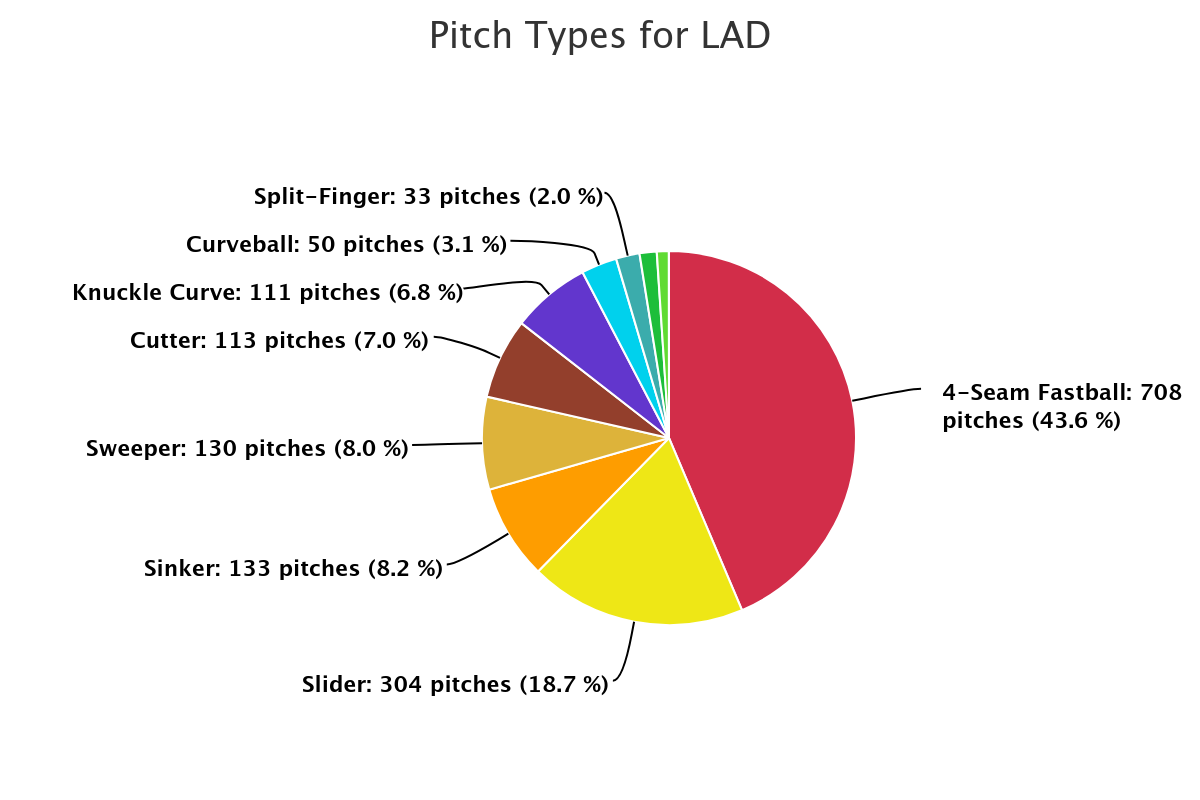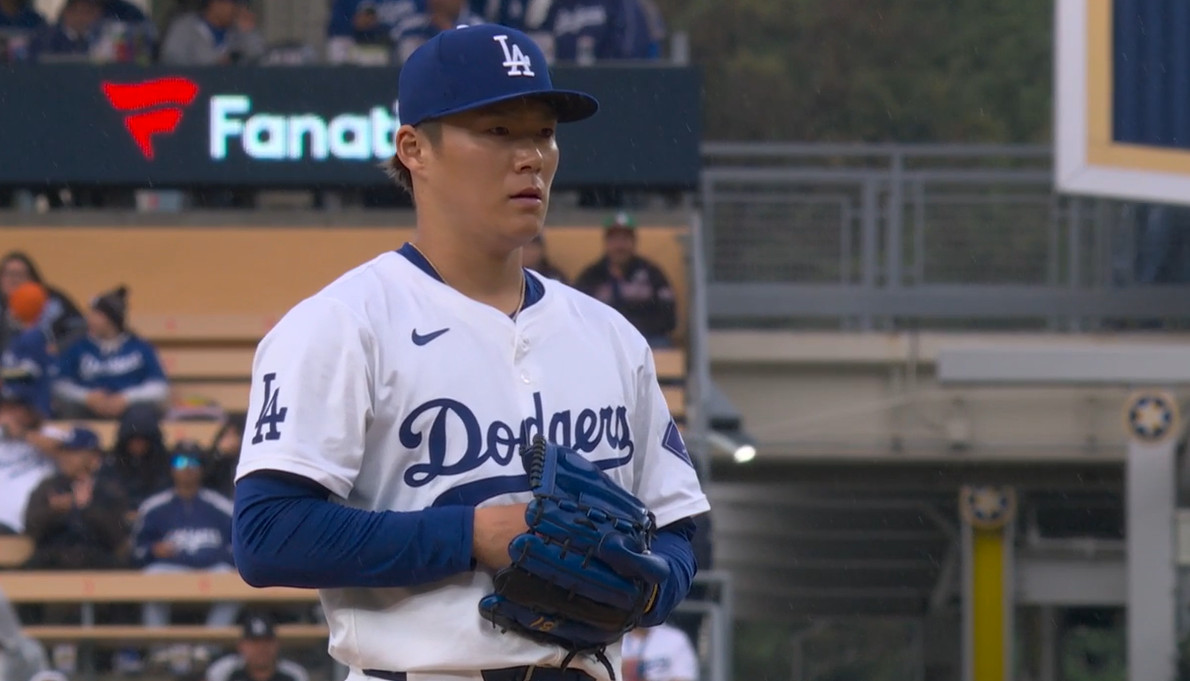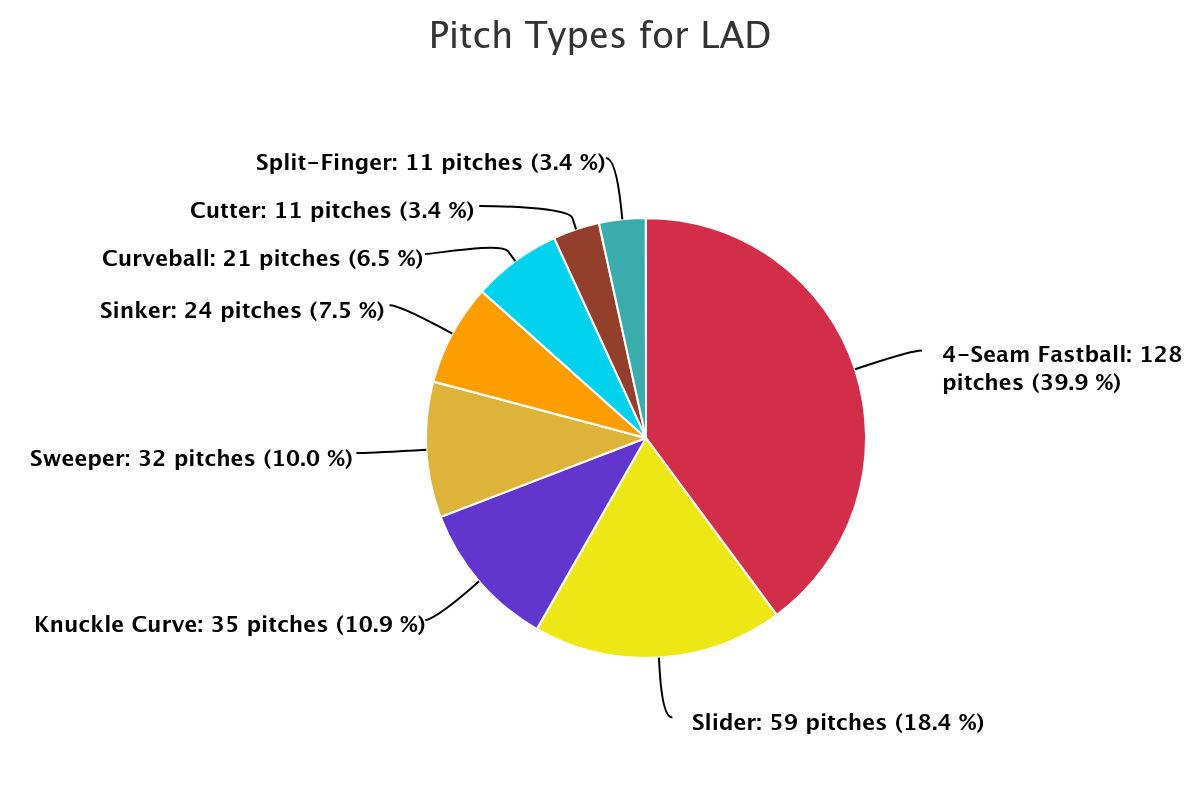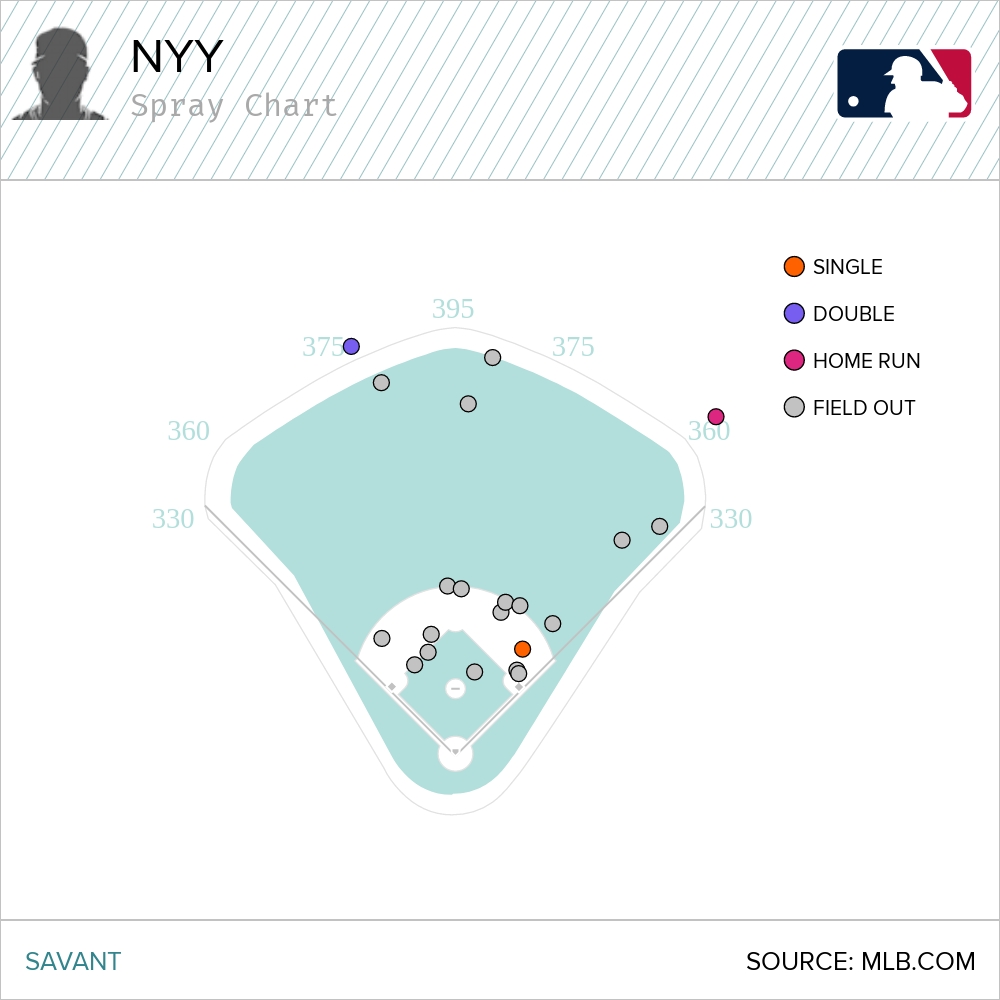Through the first two games of the World Series, the Dodgers’ pitching — both starters and relievers — have been up to the task. They’ve allowed five runs in two games and have held everyone not named Juan Soto in check.
Giancarlo Stanton did his thing in Game 1 with the homer, while Jazz Chisholm Jr. has been a tough out as well. Other than those three, the rest of the Yankee hitters are 6-for-38 (.158) with one extra-base hit, four walks and 17 strikeouts.
Prior to the start of this series, I looked at the Dodgers’ pitchers — starters, mostly — and what they might have to do with their pitch selection and usage.
“The Yankees destroy 4-seam fastballs. In the regular and postseason combined, they hit .255/.363/.474 with an MLB-best average exit velocity (93.3 MPH) and HardHit% (51.9). In this postseason alone, those numbers are .291/.398/.593, 97.5 MPH and 67.6 HardHit%. Yikes! In the video above, Brozdowski highlighted the fact the Dodgers have thrown the most 4-seam fastballs of any team in this postseason, and that might need to change in this series.
The Dodgers have thrown 4-seamers 43.6% of the time and haven’t been overly successful with it. The Padres and Mets hit .248/.337/.418 with a 91.9 MPH exit velo and 46 HardHit%. Outside of a 2-game postseason appearance by Atlanta (9.1%), the Dodgers’ 17% whiff rate on 4-seamers is the worst of any playoff team. Then again, the pitch isn’t used primarily as a whiff pitch, especially considering the makeup of the Dodgers’ pitching staff.”
So, what have they done in the first two games of the series? They’ve made a few changes.
NLDS/NLCS Pitch Usage

World Series Pitch Usage
So, we’ve seen a slight decrease in fastball usage, with the biggest increases coming on curveballs/knuckle curvreballs. That’s thanks to Jack Flaherty (KCV) and Yoshinobu Yamamoto (CB). The sweeper usage is up because Blake Treinen has thrown 55 pitches in the first two games of this series, 32 of which have been sweepers (58.2%).
The decrease in fastball usage is thanks in part to Flaherty, who threw 38% 4-seamers on Friday night. That was down from his 44.3% rate in the regular season and 43% rate in the National League playoffs. Yamamoto, however, had no issue throwing his 4-seamer on Saturday night. He threw it 48.8% of the time, which was his fifth-highest usage rate of the season and second-highest since coming back from injury. Yamamoto threw the fastball just 40.4% of the time in the regular season, but in his June 7 start in New York against the Yankees, he threw it 50.9% of the time, so it’s clear the Dodger brass and Yamamoto think there’s something with his fastball that gives the Yankees a bit of trouble.
The Dodgers have also been a bit fortunate, as the Yankees are hitting .111/.250/.259 on fastballs. The fortunate part? The Yankees have a 92 MPH average exit velo and a 57.1 HardHit% against the Dodgers’ 4-seamers through two games.
Luckily, most of that damage has come on the infield and non-threatening fly balls to the outfield. Maybe we’ll see even fewer 4-seamers going forward, and that could all start with Walker Buehler tonight.
Buehler gets the ball in Game 3 and we can probably expect a similar version of himself that we saw in New York nearly a couple weeks ago — just on the other side of town.
“As for the fastball usage, Buehler threw it just 27% of the time in Game 3. The average velocity was actually down 1.2 MPH from the 95 MPH mark in the regular season and down 1.1 from his NLDS start against the Padres. The biggest difference? The spin rate. His average 4-seam spin rate on Wednesday night was 2,365 RPM, up from 2,288 in the NLDS and 2,280 in the regular season. It still wasn’t his best pitch — far from it. But for Game 3, it was acceptable. This could be the plan for Buehler for the remainder of this season (however long that might be) and something he can do going forward.”
It’ll be interesting to see if the velocity bounces back a bit, since he hasn’t pitched since Oct. 16. But I’m wondering if Buehler and the Dodgers would trade velo for the increased spin that he showed in his last start. His fastball is still plenty solid at 93.8 MPH with that increased spin, he’ll just have to be on with is command. For comparison, Flaherty’s fastball in Game 1 averaged 93.6 MPH with an average spin rate of 2,276, more in line with his season average. Flaherty only got three whiffs (23%) on it, but also allowed just an 80.6 MPH average exit velocity on four balls in play.
Perhaps Buehler might go to the sinker a bit more. He threw it 16.2% of the time in the regular season, but that number is down to 10.2% in the postseason so far. The Yankees are 4-for-7 on sinkers this series (all singles), but those are all off Graterol and Treinen. Flaherty threw one sinker in his outing, while Yamamoto threw none. Perhaps a different arm throwing sinkers could flummox the Yanks — or at least keep them off the 4-seamer a bit.
Buehler is in a transformation stage as a pitcher. The playoffs and World Series isn’t the ideal time to attempt this kind of transformation, but if anyone is going to be successful with it, it’s Buehler. He has shown up in big games in the past and Dave Roberts is a true believer in Buehler’s ability — even this version of him.
With a “traditional” bullpen game on tap for Game 4, the Dodgers are hoping Buehler can give them a little length. Treinen is probably not fully unavailable, but it’d be nice if the Dodgers didn’t have to go to him tonight. Daniel Hudson and Ryan Brasier have yet to throw, so I’d expect them to back up Buehler. And with Brusdar Graterol back and Alex Vesia only throwing one pitch in Game 2 (after 16 in Game 1), the bullpen outside of Treinen is setup as well as possible for the next couple games. If Buehler can get anywhere from 12-15 outs and limit the damage, the Dodgers would probably take it and lean on the bullpen and, more importantly, the offense.
——
So far, the Dodgers are executing their game plan on the mound. A badly located curveball to Stanton and a laborious ninth inning by Treinen in Game 2 have been about the only hiccups for the arms this series. We’ll get to witness the Walker Buehler reinvention project continue on, it’ll just be in Game 3 of the World Series instead of Spring Training.
 Dodgers Digest Los Angeles Dodgers Baseball Blog
Dodgers Digest Los Angeles Dodgers Baseball Blog


